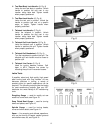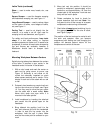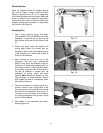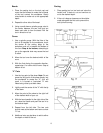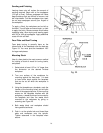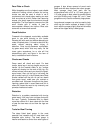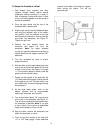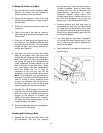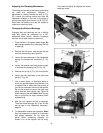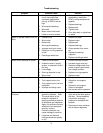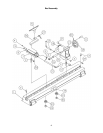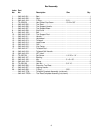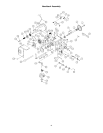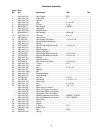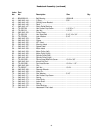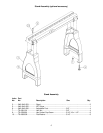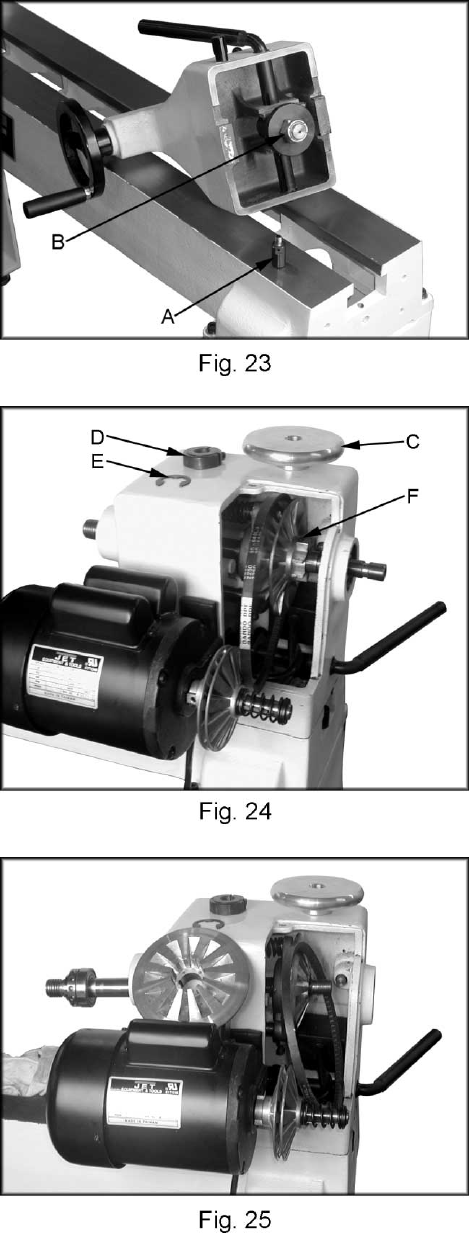
2
0
Adjusting the Clamping Mechanism
The clamps are pre-set at the factory and should
not need any adjustment. However, if
adjustment is needed, remove the stud (A, Fig.
23). Loosen the locking handle and slide the
headstock, tailstock or tool rest to the edge of
the bed and slightly turn the hex nut (B, Fig. 23).
Slide back into position and test the handle to
make sure it securely locks.
Changing the Belt and Bearings
Changing belt and bearings can be a difficult
task, and should be performed by a JET
authorized repair station. Remove headstock
and take into a repair station for servicing.
1. Place the belt in its highest speed range. Do
not change speeds while changing the belt
or bearings.
2. Remove the belt cover, and remove the belt
from the lower pulley, see Figure 24.
3. Loosen the two setscrews in the handwheel
enough to unthread the handwheel (C, Fig.
24).
4. Loosen the socket head cap screw enough
to unthread the clamping nut (D, Fig. 24).
5. Remove one e-ring (E, Fig. 24) from spindle.
6. Loosen the two setscrews in the right hand
pulley (F, Fig. 24).
7. Use a wood dowel, or aluminum stock to
knock the spindle towards the tailstock. Use
a material that is softer than the spindle so
you do not mushroom the end of the spindle.
Go only far enough to remove the right hand
pulley and belt from spindle, see Figure 25
when changing the belt. Note: Mark the key
way on the pulley for easy reference when
reassembling.
8. Now you can replace the belt or bearings.
There are three bearings #6, 9 and 43 that
can be seen in the “Headstock Assembly,”
page 24.
9. To reassemble reverse the procedure. Note:
Key way alignment is critical for installment
and proper operation. Do not force the
pulley. When reinstalling clamping nut
thread it on to the spindle until its snug.
Then back off slightly and tighten the socket
head cap screw.



